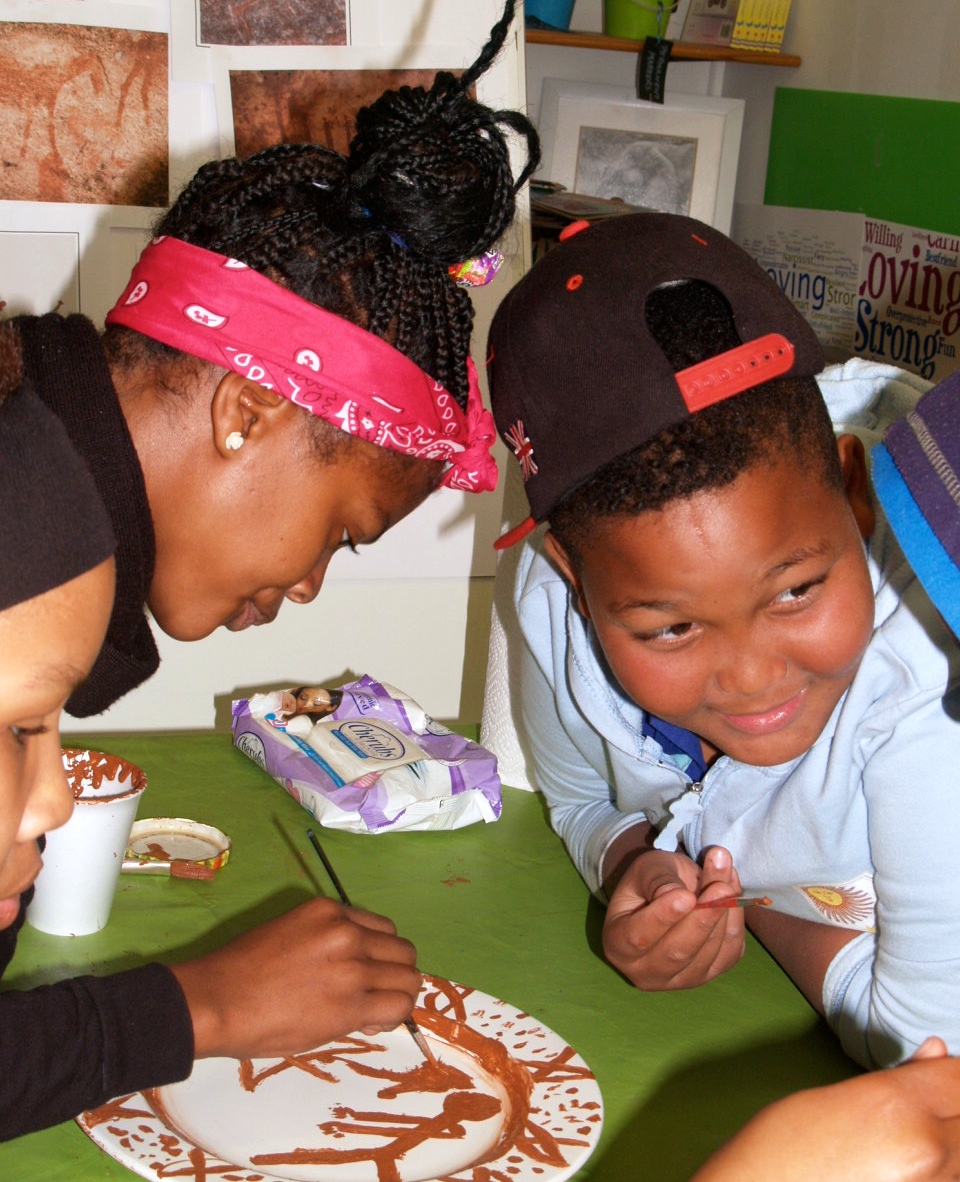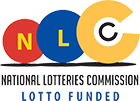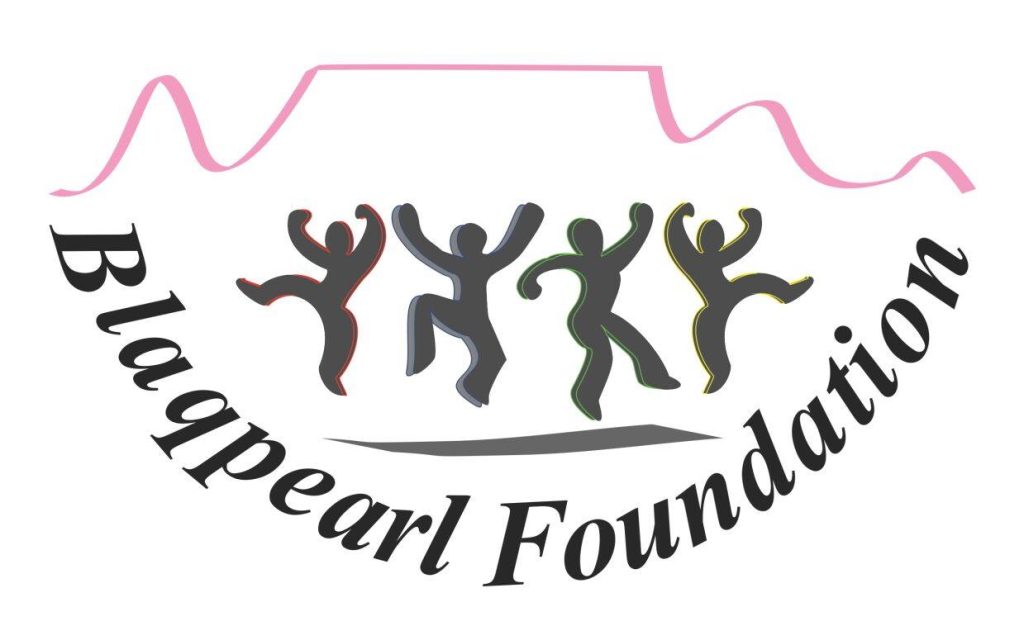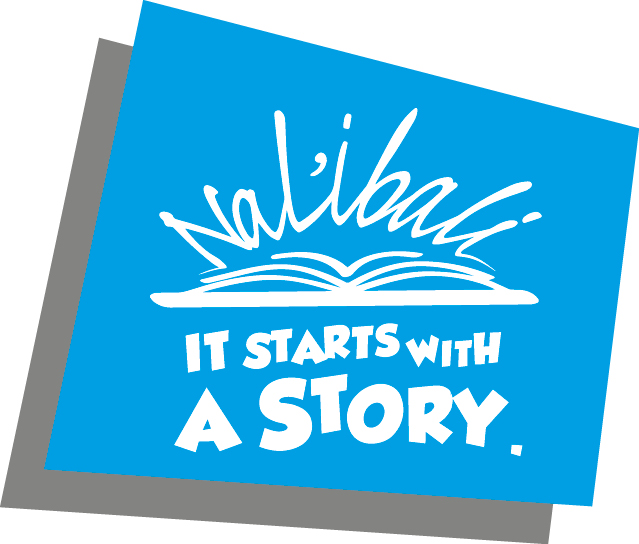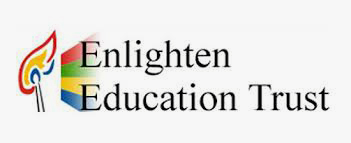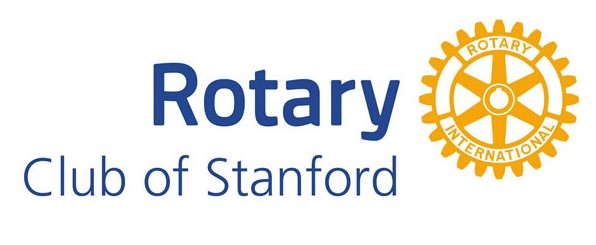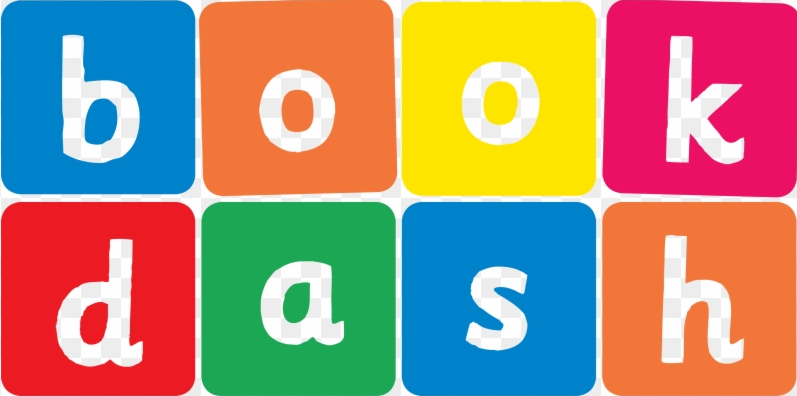CBN has completed a series of fifteen workshops over two years in Clanwilliam – twelve of them with funding from the department of Water and Sanitation in collaboration with PGS Heritage and Clanwilliam Living Landscape Project (CLLP) as part of the Clanwilliam Dam Community Project (CDCP).
The History:
CBN has been working with children from the Cederberg Region for nearly three years, beginning with small workshops for a few children and a strong connection with the libraries in the area through Senior Librarian (Clanwilliam Municipality), Natalie Leens. The librarians of Clanwilliam Library (Liezel Koopman, Asanda Lobse and Emilene Jacobs) have been part of every workshop from the beginning and have given us enthusiastic support and logistical assistance, particularly in registering the children and collecting permissions forms. We have had, throughout, support from the Clanwilliam Living Landscape Project and Professor John Parkington who have allowed us to use their hall and classroom and provided a home for the project.
We worked with children from four schools: Clanwilliam High School, Sederberg Primary, Augsburg Landbougimnasium and Elizabethfontein Primary School. At the beginning of 2015 we extended this programme with funding from part of the Clanwilliam Dam Community Project (CDCP). This project also included work on local plant use and the collection of stories from people living in the valley.
The CDCP Project:
Soon construction will begin on raising the wall of the Clanwilliam Dam. This major civil engineering project has been preceded by upgrading of the N7 that bypasses Clanwilliam on the way to Namibia from Cape Town.
When the level of the dam begins to rise, there will be flooding of some culturally and historically significant sites. With funding from the Department of Water and Sanitation, through the good offices of PGS Heritage (the archaeologists undertaking the recording of artefacts and sites around the dam) and Clanwilliam Living Landscape Project, CBN was able to offer a programme to children in the valley as part of the Clanwilliam Dam Community Project (CDCP), that would inform and enlighten them about their landscape and its place in history from geological to current. We called this programme: Time in the Valley. During 2015 we gave a total of eleven workshops, including one three-day, and two four-day events. These encompassed children of every age between six and sixteen.
The archaeologists working on recording the cultural heritage that will one day be flooded took an active part in the workshops. A highlight for all the children was seeing a stone tool (a hand axe) being made during a workshop. They also investigated useful medicinal and plant foods, excavated a stone spiral in an overgrown garden, made their own ochre for painting on clay, made detailed copies of rock art, created ‘archaeology in a bottle’ (to promote understanding of stratification), buried a time capsule with dreams for the future in Clanwilliam and had short talks on various aspects of the archaeological record of the valley. Participating archaeologists were: Wouter Fourie, Dr Katharine Kyriacou, Cuan Hahndiek, Ross Lyall-Jennings from PGS Heritage and, additionally, Emily Hallinan who is a doctoral candidate at Cambridge University. Once again, we enjoyed the support of Clanwilliam Living Landscape Project.
The Team:
The core team of CBN facilitators, Lesley Beake (Director), Rosemary Bangham (Administration Manager and Trust Secretary), croc E Moses, Anele Mhlahlo, Emily Hallinan, Nadia Woodward and Blaq Pearl (Janine van Rooy) worked with the visiting archaeologists and other scientists and experts to bring the message that reading is fun – and also good for career options both at school and in later life. We worked very closely with the local librarians (named above) to make sure that each child attending a workshop had individual and caring attention. We were also joined for two workshops by members of the FUNDZA Educational Trust team, who worked with high school students. Our brilliant caterer, Liezel Hoffman, manageress of Clanwilliam Living Landscape Project, made sure that all were well cared for with a breakfast snack on arrival and a hot lunch mid way.
The vision:
Our aim is always to promote a love of reading, the single most valuable learning tool we can give our children – and that applies whether they are reading from a book or a screen. We work mainly with books, but we also use our donated iPads for individual sessions and for writing projects. One significant thing we have confirmed is that non-fiction is just as significant as fiction in attracting children to reading for pleasure. In the context of the archaeological aspects of this specific project, this was invaluable.
The books:
Our workshops begin, end, and are continuously integrated with books and stories. For this project we had access to an extensive private library of reference books related to the topic including books on archaeology, anthropology, rock art, geology, history and geography. We also used dozens of books from a comprehensive collection of children’s literature, both fiction and non-fiction. Additionally, we could source books from the Clanwilliam library and refer participants there. For quiet reading when the children needed a break, and often as source material for Books and Stories sessions, we made extensive use of Cambridge University Press’s Rainbow Reading scheme, particularly in the boxes on Water, Archaeology and Time. We make extensive and continual use of maps of the area and the participants created their own maps ranging from chalk-drawn on the stoep to detailed paper creations that included research and photography and landscape drawing from a deck with views of the Cederberg.
We always use a wide variety of texts, including picture books and adult books as well as important works of reference. Catch their attention, and children will read – and then write about and draw their interpretations and inspirations.
The children:
For the CDCP project we extended our target age-group of 10,11 & 12 to include children from pre-school and Foundation Phase, and also teenagers. They came from the Clanwilliam area and from a vibrant primary school over the Pakhuis Pass (Elizabethfontein Primary), which gave us huge support including sending their Riel Dans team to tell their stories in dance at two workshops and arranging transport to bring children over the pass when necessary.
The method:
Workshops can be a Friday afternoon after school, followed by a Saturday or (for most workshops) several days in the school holidays. Our longest workshops have been for four days and, although we thought the children might get tired, we have a full complement of children on every day.
We work in English. This is mostly because we have different language groups within every workshop situation (usually isiXhosa and Afrikaans), but also because the children are taught in English for many subjects at school. We are always surprised at the level of understanding, although the children are not confident speaking English, and put this down to the (for once) beneficial influence of television.
CBN workshops are designed to be fun. Children come voluntarily in school holidays and at weekends and view the workshops as recreation – and a welcome change from school. We don’t have the structure that a formal classroom can offer – so we have to work extra hard to keep everyone absorbed and interested. A great deal of pre-preparation is necessary, and we always have more activities up our sleeves than we actually have time for. We try to include games and group activities to balance listening skills and writing and creative work.
These can vary from clapping-pattern games as a warm-up activity, to writing and composing songs related to the activities. We have featured such diverse projects as shadow puppet theatre, percussion on rock-gongs (ringing rocks), interviews, personal and family histories, and a great diversity of art and musical activities, as well as the archaeological activities mentioned above, all enhancing the core aim of reading and writing.
We also entertain the children, bringing a wealth of experience from facilitators such as croc E Moses, a well known slam poet, Anele Mhlahlo, previously leader of the South African Youth Orchestra, Nadia Woodward, an actress and director who also works for Assitej (the international youth theatre organization), and Blaq Pearl, singer-songwriter and published poet. We have had incredible input over many workshops from Emily Hallinan, currently a doctoral candidate in archaeology at Cambridge University who injects a huge amount of enthusiasm and expertise. Where appropriate, we have used short film clips and animated cartoons to illustrate a point.
Selection of children:
There is no hierarchy and no competitive testing. We distribute permissions forms through the library and schools asking for parental permission (and for the photographs and writing of each child to be reproduced on our website.) Those who are motivated get the forms back to the library. We almost always have 100% attendance on all days of the workshops and there are usually about 30% children who have attended previous workshops. They all come back on subsequent days.
Scope of this project:
Our brief was to inform and educate local children about the importance of their heritage in the valley of the Olifants River. This was particularly in relation to the extent of human occupation of the area and the effects of a modern dam on life there in the future.
People go back a long way in the archaeology of the valley and the signs of their presence are everywhere. It came as a huge surprise to our participants to learn just how long (early humans were living here a million years ago). We also found that even high school learners had little grasp of the purpose of the dam and the mechanics of irrigation. (Even adults asked why ‘they’ don’t just stop letting the water out when the dam level gets lower?) There was little comprehension of the importance of the agricultural industry downstream of Clanwilliam.
Just as important was the connection we could make for the children between the present day and mythical memory and historical events through study and reading of San stories and ethnography.
Results:
Children out of a school situation vote with their feet. Even when they stay, they quickly show signs of boredom and begin to behave badly. The subject matter of these particular workshops held the interest of nearly all the children all of the time. We pushed them hard – and they responded warmly. When quiet reading times were suggested, they welcomed the chance to relax a little – and they read! They also participated fully in all the activities, performing songs they had written themselves, acting out shadow puppet plays, listening to books and stories and music with obvious attention. It was a great privilege to work with the children of the valley.
At the end of the last workshop (which they knew was the end of the cycle) one girl asked an important question: ‘Why did you bring Children’s Book Network to Clanwilliam?’
‘Why do you think?’ we asked in return.
‘To make the children happy,’ was the instant reply.
That wasn’t in the original brief, but we hope it was the case. It is just as important as any other aspects of this project.
Links to individual workshop reports:
Theme | Date | Number of Children | Ages | Number of Days | Online Report
Water & Stories | March | 23 children | ages 9-13 | 2 days https://www.childrensbook.co.za/news/2015/03/24/water-stories-clanwilliam-20-march-2015
Rock Art | April | 6 children | ages 12- 14 | 1 day https://www.childrensbook.co.za/news/2015/04/03/mini-workshop-international-children%E2%80%99s-book-day
River, Land, Time, People | April | 23 children | ages 9-11 | 3 days
https://www.childrensbook.co.za/news/2015/04/12/river-land-time-and-people
FUNDZA | April | 20 children | ages 13-17 | 2 days | https://www.childrensbook.co.za/news/2015/04/13/cbn-and-fundza-workshop-clanwilliam
School Visit – Stories of Yesterday | May | 22 children | ages 9-10 | 1 day https://www.childrensbook.co.za/news/2015/05/15/tracks-and-traces
Tracks & Traces | May | 26 children | 10-12 | 2 days https://www.childrensbook.co.za/news/2015/05/25/tracking-past
Teenagers Library mini workshop | June | 21 children | ages 13-17 | 1 day https://www.childrensbook.co.za/news/2015/05/30/mini-workshop-teenagers-clanwilliam
Time in the Valley | June | 17 children | ages 13-17 | 4 days https://www.childrensbook.co.za/news/2015/07/03/time-and-valley
By Special Request | July | 6 children | ages 8-10 | 1 day https://www.childrensbook.co.za/news/2015/07/03/special-request
Time in the Valley | July | 24 children | ages 12-14 | 4 days
Day 1
https://www.childrensbook.co.za/news/2015/07/13/first-day-time-and-valley-primary-school
Day 2
https://www.childrensbook.co.za/news/2015/07/17/second-day-time-and-valley-primary-school
Day 3
https://www.childrensbook.co.za/news/2015/07/17/time-and-valley-%E2%80%93-days-3-4
Finale – Heritage Symposium | October | middles | 17 | 1 |
https://www.childrensbook.co.za/news/2015/11/04/final-time-valley-workshop

